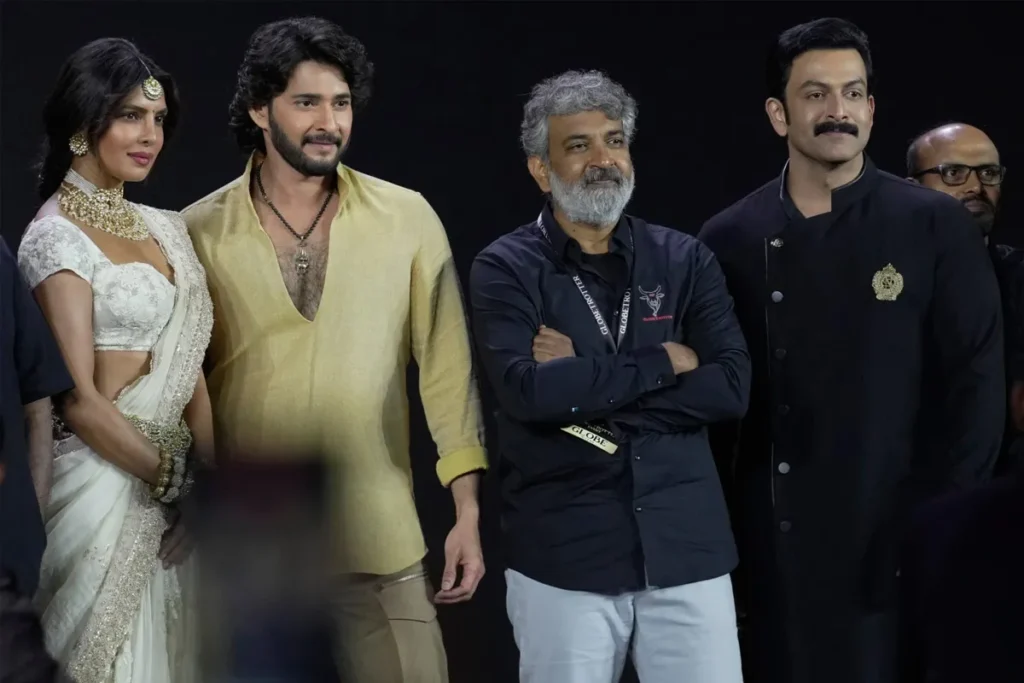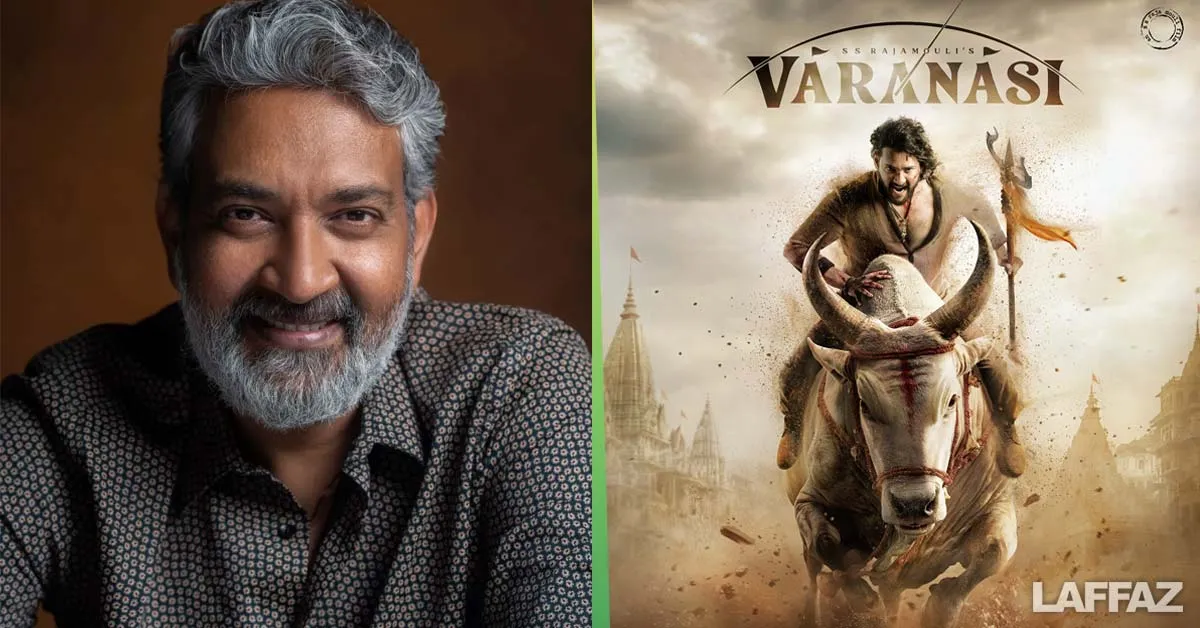S. S. Rajamouli’s Varanasi is shaping up to be one of the most closely watched Indian films of the decade — not just because of its global fan base, but because it marks the director’s most ambitious attempt to merge Indian mythology with large-scale, high-concept science fiction. Scheduled for a 2027 release, the film is already drawing worldwide attention, long before shooting has completed.
Rajamouli, the Telugu filmmaker behind notable film projects like Baahubali and RRR, presented his next project, Varanasi, at Ramoji film City, Hyderabad, on Saturday. The unveiling has immediately become global news. Positioned as a sci‑fi action-adventure that weaves elements of Hindu mythology and the emotional sweep of the Ramayana into a time-travel narrative, the film signals Rajamouli’s bid to once again push regional Indian cinema onto the international stage.

Mahesh Babu leads the film as ‘Rudhra’ – a character introduced at the Hyderabad event riding a massive mechanical bull, signaling a blend of mythic symbolism and cinematic flamboyance. Priyanka Chopra Jonas returns to Indian cinema as Mandakini, a move that has generated substantial attention in the U.S., where Chopra’s Hollywood presence has consistently helped Indian films break through to mainstream coverage. Malayalam star Prithviraj Sukumaran is also attached to a major role that is expected to carry both political and mythological weight in the story.
The nearly four-minute preview featured recreated sets of Varanasi circa 512 CE, alongside images suggesting cosmic transitions, archaeological clues, and scenes that appear to depict rifts in the fabric of time. Rajamouli’s long-standing VFX partners have reportedly begun early previsualization work to handle what is expected to be the heaviest effects load in any Indian film to date. Industry analysts believe the production scale exceeds that of both RRR and Baahubali, especially with the director targeting a global IMAX rollout.
The film’s early journey has not been without controversy. A drone leak capturing parts of the teaser circulated online ahead of the official screening, prompting Rajamouli to publicly condemn the breach, calling it a violation of “one year of hard work.” Technical glitches at the event added to the chaos, but the uproar only amplified audience curiosity, helping the project gain even more traction on social media.
What differentiates Varanasi from other large-scale Indian films is its ability to sit at the intersection of mythology, history, fantasy, and speculative science. Scholars and cinephiles have already begun to compare it to contemporary global epics – from Dune to The Eternals – noting that Rajamouli appears to be constructing a uniquely Indian cinematic universe rooted in metaphysics, cosmic cycles, and the concept of time as described in Hindu philosophy.
International interest has grown rapidly, with U.S. publications picking up early reports about the film’s themes of time travel and mythic reconstruction. The presence of Chopra and Rajamouli’s increasing visibility due to RRR’s awards run in Hollywood have created a pipeline of global curiosity. Industry experts expect sustained coverage in the years leading up to 2027, especially as each new teaser, image, or casting confirmation is released.
What to watch next?
Formal release dates, an official trailer drop, and full casting confirmations. For now, Varanasi promises a collision of devotional iconography, blockbuster spectacle and speculative storytelling – a combination that will likely fuel debate about cultural representation even as it attracts a broad global audience.
Editor’s Note
With three years left until its planned debut, Varanasi is positioned to dominate long-term search trends, particularly as conversations about cultural representation, mythology in modern cinema, and India’s growing global storytelling footprint continue to evolve. As more details emerge, the film is expected to spark debates not just among fans, but among scholars, religious commentators, filmmakers, and global audiences intrigued by Rajamouli’s attempt to craft a new genre hybrid for mainstream cinema.
ⓘ As part of our ongoing support for startups and SMEs, LAFFAZ Media publishes feature and resource articles that may include references and links to external websites. These inclusions are selected at our editorial discretion to provide valuable information to our readers. LAFFAZ Media does not control, endorse, or assume responsibility for the content or practices of external websites. For more details, please refer to our Terms and Conditions.






